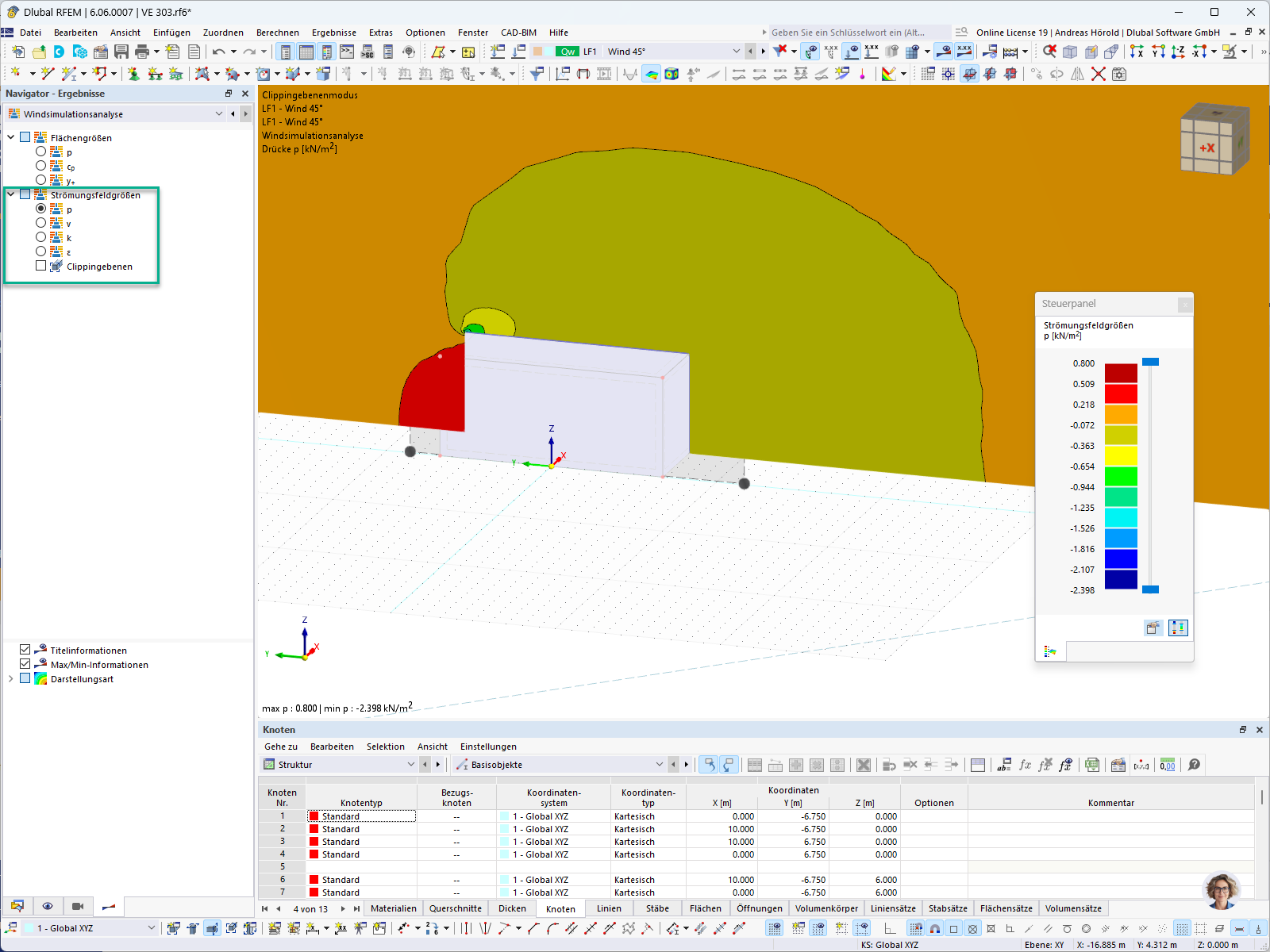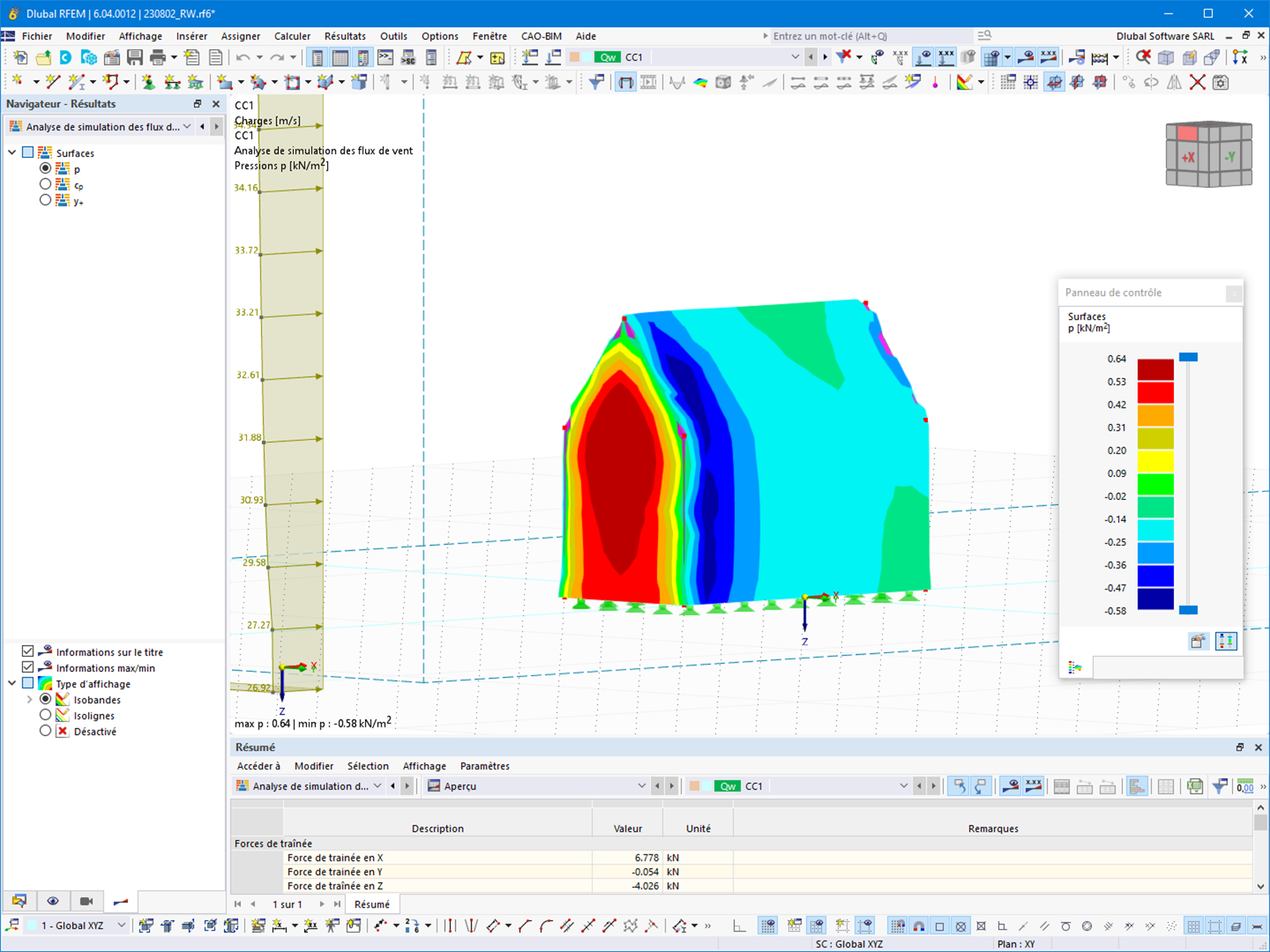Description du projet
Les normes disponibles, telles que l'EN 1991-1-4 [1], l'ASCE/SEI 7-16 et la NBC 2015, présentaient des paramètres de charge de vent tels que le coefficient de pression du vent (Cp ) pour formes de base. The important point is how to calculate wind load parameters faster and more accurately rather than working on time-consuming as well as sometimes complicated formulas in standards.
One of the important points in the CFD simulation is to find accurate and compatible configurations regarding input data such as turbulence models, wind velocity profile, turbulence intensity, boundary layer condition, order of discretization, and so on, which are not mentioned in Eurocode. In the current example for cylinder shape, we recommend compatible settings regarding the Eurocode standard. As can be seen in EN 1991-1-4, there are complicated formulas to obtain the Cp value related to different Reynolds numbers.
Solution analytique
The dimension of the cylinder as shown in Figure 1 is designed for Reynolds number (Re= 2*106) based on the Equation 7.15 (EN 1991-1-4), where b is the diameter, ν is the kinematic viscosity of the air (ν=15*10-6 m2/s), v(ze) is the peak wind velocity:
Here are the assumptions and recommended settings (Table 1), which present better agreement with Cp and force coefficient value with Eurocode example :
| Vitesse du vent | V | 30 | m/s |
| Reynolds Number (Equation 7.15, EN 1991-1-4) | Re | 2*106 | - |
| Hauteur | L | 1 | m |
| Diamètre | D | 1 | m |
| Position of the Minimum Pressure/Flow Separation (Table 7.12, EN 1991-1-4) | αmin/αA | 80/120 | Degré |
| Value of the Minimum Pressure Coefficient (Table 7.12, EN 1991-1-4) | Cp0,min | -1.9 | - |
| Base Pressure Coefficient (Table 7.12, EN 1991-1-4) | Cp0,h | -0.7 | - |
| The Solidity Ratio (Equation 7.28, EN 1991-1-4) | φ | 1 | - |
| The Effective Slenderness (Table 7.16, EN 1991-1-4) | λ | 1 | - |
| End-effect Factor (Figure 7.36 - Equation 7.17, EN 1991-1-4) | ψλ - ψλa | 0.6-(0.6-1) | - |
| Force Coefficient (Figure 7.28, EN 1991-1-4) | Cf,0 | 0.55 | - |
| Air Density | ρ ... | 1,25 | kg/m3 |
| Turbulence Model | Steady RANS k-ω SST | - | - |
| Kinematic Viscosity (Equation 7.15, EN 1991-1-4) | ν | 1,5*10-5 | m2/s |
| Scheme Order | Deuxième | - | - |
| Residual Target Value | 10-5 | - | - |
| Residual Type | Pression | - | - |
| Minimum Number of Iterations | 800 | - | - |
| Boundry Layer | NL | 10 | - |
| Type of Wall Function | Amélioré / combiné | - | - |
| Turbulence Intensity (Best Fit) | I | 7.5%-15% | - |
résultats
Finally, the Cp contour for 7.5% turbulence intensity (Figure 2) and the diagram for various turbulence intensities are plotted in Figure 3, in which I=7.5% is shown better agreement in predicting the average wind pressure coefficient. For another criterion (Force coefficient Cf,0 in Table 2) which can be obtained regarding Figure 7.28 in EN 1991-1-4, the value of 15% is closer to Eurocode example.
| Turbulence Intensity (%) | Fd (N) | ρ (kg/m3) | u (m/s) | A (m2) | Cf,0 |
| 1,00 | 253 | 1.25 | 30 | 1 | 0.45 |
| 5.00 | 226 | 1.25 | 30 | 1 | 0.40 |
| 7.50 | 253 | 1.25 | 30 | 1 | 0.46 |
| 10.00 | 257 | 1.25 | 30 | 1 | 0.46 |
| 15.00 | 303 | 1,25 | 30 | 1 | 0.54 |
| 20,00 | 328 | 1.25 | 30 | 1 | 0.58 |
| 25.00 | 361 | 1.25 | 30 | 1 | 0.64 |
| Eurocode | |||||
| 0.55 |
Also, the cylinder model with recommended settings is available to download here:

















































